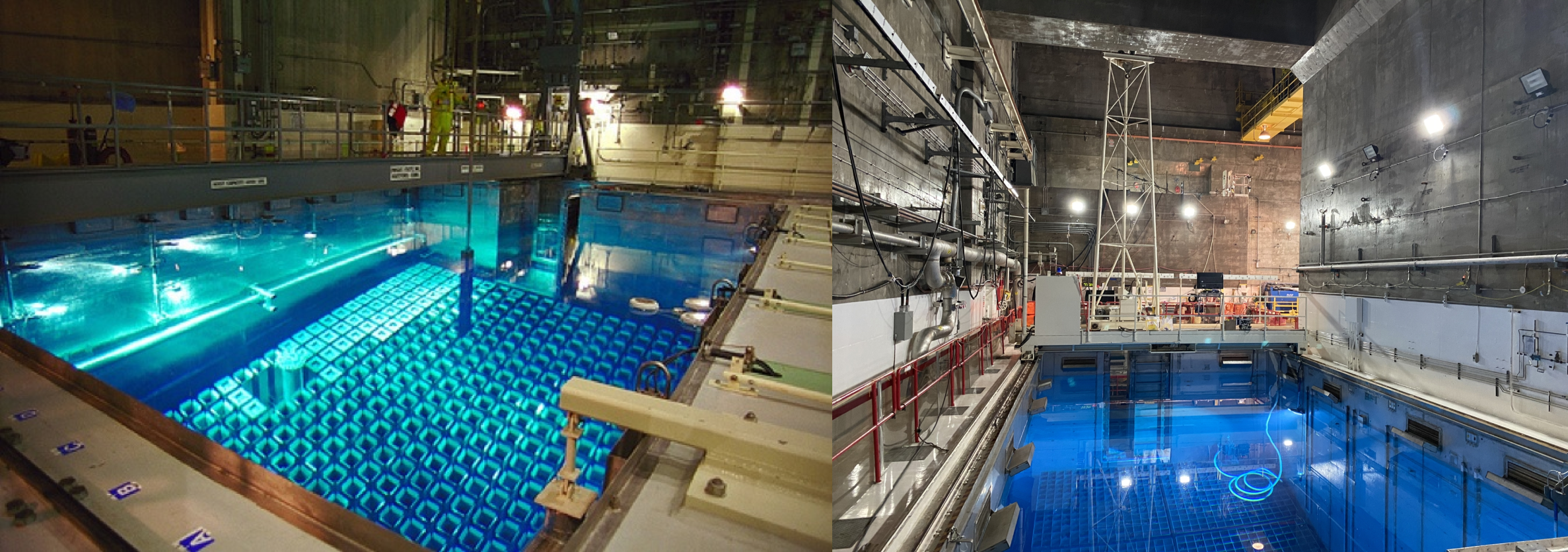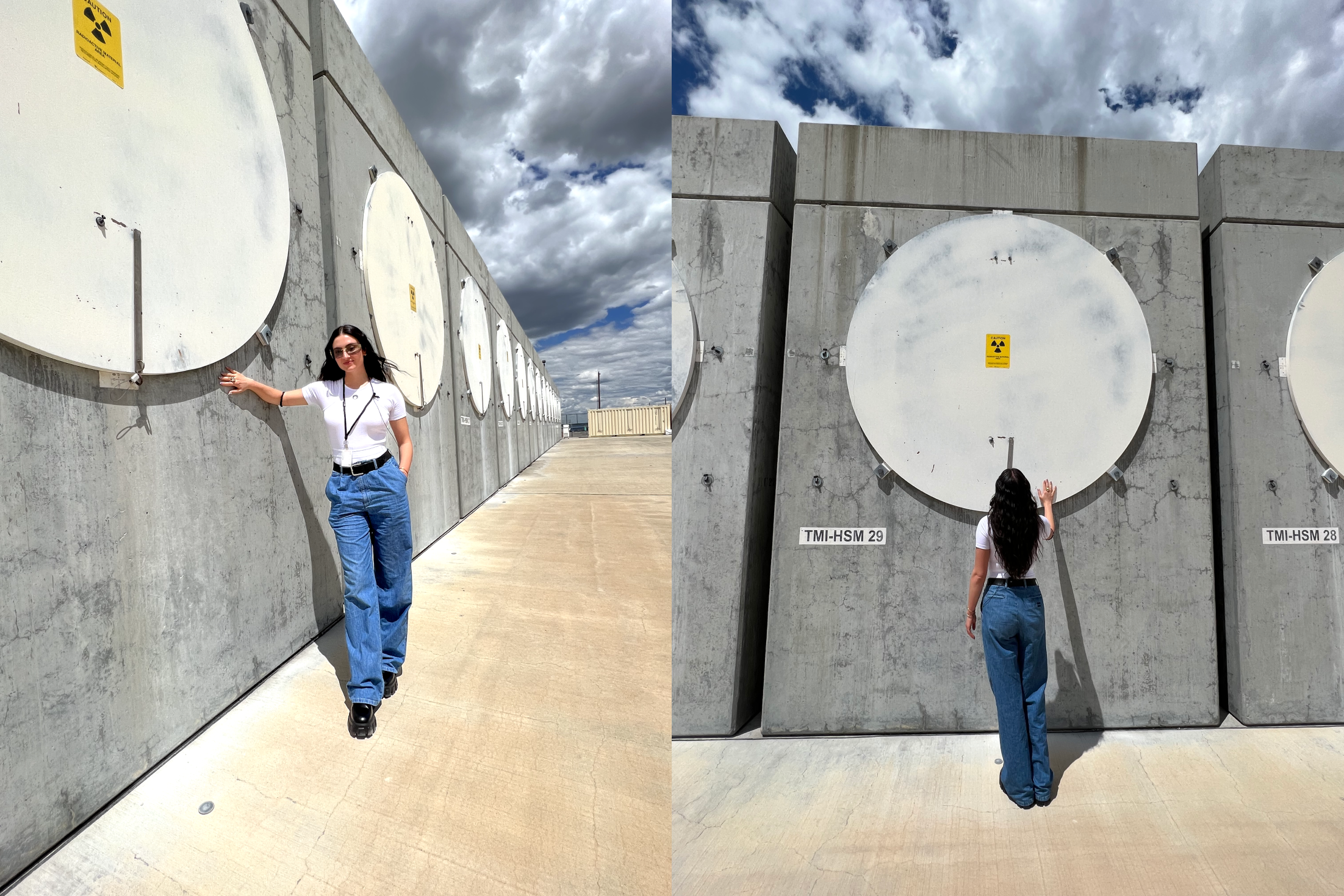Let's talk about nuclear waste
You’ve heard of nuclear waste, right? You’re probably familiar with its criticisms: the most dangerous waste on earth, piling up everywhere, destroying our planet, leaking radioactive goo, and we have no clue what to do with it.

Sigh. That myth will simply not die. But what if I told you that most of what you think you know about nuclear waste is probably not true?
Back to the basics: what tf is nuclear waste?
The sad reality is that everything in the world creates waste. Don’t even get me started on plastic waste 🙄 (that’s a blog for another time). The waste people are talking about when they say, “We don’t know what to do with nuclear waste that stays radioactive for thousands of years,” is actually something called “spent fuel”. It’s just a fancy term for “nuclear waste” because it’s actually just nuclear fuel that has been removed after being used in a nuclear reactor.
You might be asking yourself what the hell any of this means. Let me break it down for you.
How nuclear fuel does its thing
Step 1: Fuel goes into a nuclear reactor to make sweet, clean, reliable electricity. Nuclear fuel is in the form of uranium pellets, roughly the size of gummy bears.
Step 2: This fuel stays in the reactor doing its thing for about 5 years. But by the end of its life, we will have only used around 5% of the energy in it.
Step 3: When it comes out of the reactor, it’s literally hot and super radioactive.
Step 4: Now that the uranium pellets are used, *cough* “spent” *cough*, they need to go into a deep, 40ft pool to cool down for a bit, usually around 5 years or so.
Step 5: After the “spent fuel” has been cooled down enough, it gets placed in metal and concrete containers to finish cooling off for a couple decades.
Step 6: In the U.S., the containers are usually placed in a parking lot at the nuclear plant and just chill there doing nothing for the rest of its life.
Now listen, I get it. Super hot, radioactive material that takes decades to cool down and stays radioactive for thousands of years sounds sketchy at best. But sometimes things sound more dangerous than they actually are.
Consider flying in an airplane. It’s the safest mode of transportation on earth, and yet about 40% of the U.S. population has a fear of flying. So that begs the question, is nuclear waste actually that dangerous?
Let’s clear up some common misconceptions about nuclear waste (spent fuel)
Misconception #1: We have a lot of it
Because of how dense nuclear energy is, there’s not a huge amount of nuclear spent fuel around. For 60 years of making a shit ton of electricity in the United States, we have only produced around 85,000 metric tons of spent nuclear fuel. All that “waste” would comfortably fit inside a Walmart. For comparison, we make nearly 3x as much coal waste (coal ash and scrubber sludge) every year, on top of emitting 1.9 billion tons of carbon dioxide into our atmosphere.
Misconception #2: It’s harmful and contaminates the environment
If spent fuel is so dangerous, it must have hurt or killed a bunch of people, contaminated the environment, created utter and sheer chaos that our species will never recover from, right?
Believe it or not, we don’t have evidence that ANYONE has ever died or even gotten sick from stored nuclear spent fuel. There isn’t a single reported case. But how can that be? Turns out science is pretty rad, and we’ve figured out how to measure and block radiation pretty easily.
Misconception #3: We don’t know what to do with it and it’s handled poorly
The wild thing is that the nuclear industry is the only energy-generating industry that’s responsible for containing and getting rid of its own waste. Read that again.
Let’s compare this to fossil fuel waste that spews into the air, creates air pollution (which already kills over 4 million people a year) and causes climate change. The waste from wind turbines and solar panels is not regulated in the United States. Manufacturers aren’t responsible for throwing them away, so they usually end up in landfills or sold to countries in Africa and Asia. The list goes on.

But because nuclear “waste” is so radioactive, we can’t just throw it into the landfill or casually put it in trees (we see you Mr. Burns). That means the companies that run nuclear power plants need to keep it safe. And they do a damn good job at it.
How exactly is nuclear spent fuel handled safely?
Once uranium is done making electricity, the first step is to take it out of the reactor’s core. Like we learned, at this point, it’s called “spent fuel”. They put it in a super deep pool (it literally looks like a swimming pool with water). The water does two things: it cools the spent fuel down and blocks radiation. FUN FACT: water is so good at blocking radiation that you can stand right next to this pool and be totally fine. You can actually even swim in the pool without any harm. It’s literally someone’s job.

The whole pool shenanigans goes on for at least five years before it’s moved from the pool into a big concrete and steel cask that looks like a big can of Pringles. This cask is very dryly named “dry cask”, and it gets put with all the other dry casks on site at the nuclear plant usually. After it finally arrives at its storage destination, it just sits there! Pretty boring stuff. And that’s basically the end of it.

Still not convinced that this is a super safe way of handling nuclear waste?
These concrete casks are also really good at blocking radiation, which means you can stand right next to it without any issues. Just look at me touching some of these casks at Idaho National Laboratory! And the cool thing is, we can keep this waste in those casks for decades, maybe even centuries.

And to really bring home the point about how safe these casks are, we have tested their durability by setting them on fire, crashing a train into them, and firing a missile at them. Don’t believe me? Check it out for yourself.
Although people have been fearmongering for decades, nuclear waste is super safe as it is being handled right now. We can measure and block radiation very easily and we know the casks prevent it from leaking into the environment. But I understand. You might still be concerned about the future and how we guarantee it’s going to be protected for hundreds or even thousands of years. What can be done?
Believe it or not, there are a few things we can do with spent fuel
Option #1: Recycle it
The crazy thing about nuclear spent fuel is that it’s over 90% still just good ol’ uranium, which can be recycled and used again to make more sweet, clean electricity. The spent fuel can be used in existing nuclear plants (France already does this) or we can use it in small modular reactors (SMRs) in the future.
Option #2: Store it
Another option is to do what Finland is doing: build an underground facility where you can put this waste and leave it there forever. For those of you who are saying, “bUt wE hAvE NEvEr bUiLt AnYtHiNg ThAt LaStS tHoUsAnDs Of YeArS,” I present to you, the pyramids of Egypt, built 4 thousand years ago by people whose most advanced tool was basically a chisel.

Option #3: Bury it
Or we can do what American startup Deep Isolation is planning on doing, which is basically using existing drilling technology to dig really deep horizontal holes and put the spent fuel there. The cool thing about this approach is that you don’t have to build anything underground and you have the choice of closing off the holes forever or keeping them open for a couple of decades so the fuel can be pulled back out in case we decide to go with option one and recycle it.
Man, that’s a lot of different options for something people say we don’t have a solution to. And we can take it one step further.
How do we know spent fuel will stay deep underground safely for thousands of years?
I’d like to introduce you to scientists. They are mythical, magical creatures who study things and learn how the world works and put rockets into outer space and rovers on Mars, etc.
Well, scientists have known for decades that putting spent fuel super deep underground is safe. Please direct your attention to Oklo, the natural nuclear reactor found in Gabon, Africa. In 2 billion years, the waste created from Oklo only moved a couple of centimeters. So scientists know that if you put nuclear waste very deep down in certain types of rocks, it won’t come to the surface or contaminate water. It will just sit there getting less and less radioactive as time goes by. Read more about that here.
Nuclear spent fuel really isn’t that big of a deal
Now that we’ve pretty much exhausted the topic of nuclear waste, here’s the bottom line: spent fuel is boring and really not that big of a deal. It’s handled safer than any other waste in the world and 95% of it is recyclable, so we can create MORE clean energy. There are plenty of solutions for how and where to store it, and it has literally never harmed a single person ever. Let’s stop bashing nuclear waste already. Your outdated arguments about it are getting old (yawn).